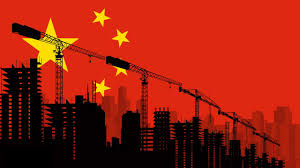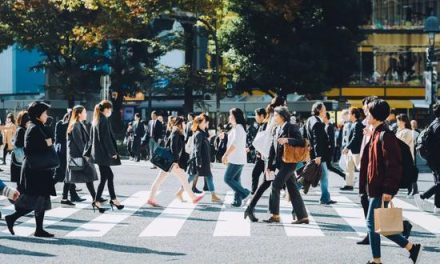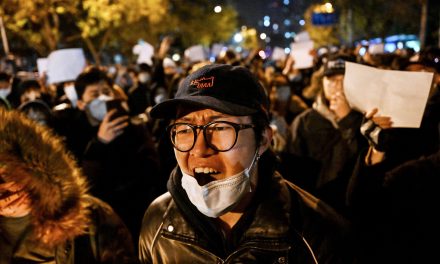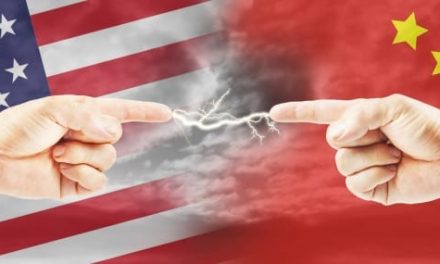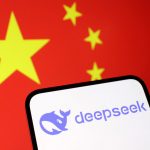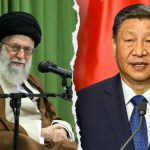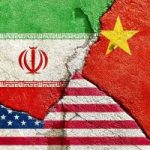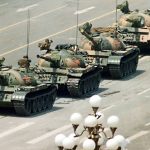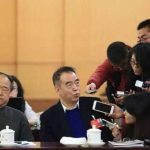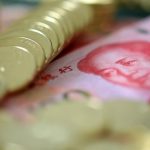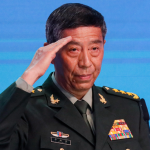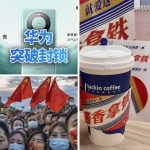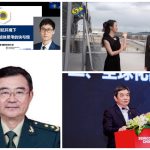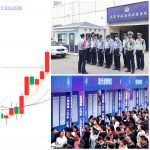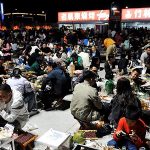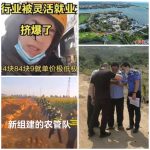By Evan Osborne
The impact of the economic rise and more recently partial fall of the People’s Republic of China has been perhaps the single biggest story worldwide since the end of the Cold War. But China’s rise since 1979, along with the century leading up to the communist seizure of power in 1949, now designated by the Chinese Communist Party as a century of shame, has been poorly understood. This essay attempts to reinterpret much of the history since China was forced in 1842 to open up both its economy and its people to the Western world.
With its defeat by Britain, in conjunction with several other Western powers, in what is now known as the First Opium War in 1842, the Manchu Qing Dynasty, which had ruled China since the mid-1600s, was forced to completely open several ports to Western goods and investment. Perhaps more substantially, these same ports became a lever to open the entire country to such Western ideas as economic theory, the scientific method, Darwinism, women’s rights, and the political themes of democracy, human rights and the rule of law.
Contrary to both current Chinese propaganda and the now-prevailing conventional wisdom in Western societies, China was never thoroughly colonized, as for example was the case in Africa, or (previously) the Western Hemisphere or what is now known as the Indian subcontinent and other parts of Asia were. However China was politically weak, its government bullied as a result. During this period the country that perhaps most closely resembled China was Japan, but while also forced to open, that country almost immediately fell into violent struggle over how to react, culminating in what historians know as the Meiji Restoration, after which a national government with meaningful authority launched a breakneck, ultimately successful attempt to catch up with the West.
In China in contrast, the bulk of the scholarship believes that the distant imperial government was initially not overly concerned by a seemingly minor penetration by a culture seen by Chinese elites as quasi-barbarian. And soon enough the Qing became preoccupied with the extraordinarily bloody Taiping Rebellion, in which many millions died, and which was only marginally related to the struggle among foreign imperial powers over their position in China.
To the extent that Chinese thinkers were concerned their thinking, which has come to be known by scholars as the self-strengthening movement, held that Western mechanical toys were of concern, if they had military value. Britain had the first military that benefited from mass-produced industrial weaponry, whose power had been on vivid display during the First Opium War. But the West was otherwise seen by many in the Chinese imperial state as a second-rate civilization, albeit one that had perhaps lucked into these magical toys, so all the Qing needed to do was to master the surely simple task of figuring out how to make the toys, and then expel the barbarians. Alas, the toys were the result of a continuous dynamic process, and China would have to — and later under foreign pressure significantly did — change its society to be dynamic, flexible, open.
But having tried, only partly successfully, to master weapons manufacture, the Qing state continued to lose wars — first to roughly the same lineup of powers in the later 1850s, then (less decisively) to the French in the 1880s and, more disturbingly, to the Japanese in 1895. The latter defeat resulted in a peace treaty that more or less forcibly opened the entire country, beyond the so-called treaty ports, to foreign commerce.
Meanwhile, defeat after defeat was convincing many thinkers in China that the country’s problem went beyond mere machines, and was in fact that its entire social and ethical framework was deficient. As the 19th century transitioned into the 20th, more such people became convinced that traditional Chinese values were the problem. The countries that were dominating China in war and peace had strange ideas that the Chinese had to master and learn from, all the more so because one of them — social Darwinism, as refracted through the prism of Chinese thinkers — indicated that societies that didn’t adapt would die.
The, in hindsight, desperately decaying Qing government tried to adapt to the new reality after the defeat by Japan, but the de facto leader of China, the Dowager Empress Cixi, after a palace struggle rejected proposed political and economic reforms in 1898. The Qing were overthrown by a brief military uprising in 1911, but replaced for merely a moment by the socialist-sympathizing Sun Yat-Sen and then by the military dictator Yuan Shikai. Yuan died a few years later, and China soon fell into civil war among various so-called warlords. (The China scholar Frank Dikötter contends the term “warlord era” is misleading.) Sun Yat-Sen died in 1925, and his successor as head of the Nationalist Party he had formed, Chiang Kai-Shek, launched a military campaign that unified the country except for the Yan’an redoubt of a violent entity born in 1921, the Communist Party of China, which Sun had accepted into his Nationalists coalition, reflective of his skepticism of “monopoly capitalism.”
Historians know the period between the time Chiang unified the county, the CCP aside, and the 1937 Japanese invasion of China proper (the Japanese had already conquered Manchuria in 1931) as the Nanjing Decade. During this time the government, controlled dictatorially and outright by Chiang’s Kuomintang (still a major political party in Taiwan today) increased government control over the internal economy substantially, partly owing to its belief in state control over the economy, and partly because such control, there as everywhere (including CCP China today), gave officials a chance, from Chiang on down, to get rich by extorting businesses. State intervention in the economy, substantially pared back at foreign insistence, roared back after 1927, and continued to grow through 1949. By the time time CCP took over,much of their work would already be done.
The corruption and brutality of the Nationalist Party government generated despair and growing sympathy for the communist movement. This trend was interrupted by the Japanese invasion of the rest of China in 1937, but resumed after the 1945 surrender. The Nationalists returned to power, their corruption and brutality if anything increased, enhanced by their socialist-inspired government’s outright takeover of previously Japanese-owned businesses after the surrender. Support for Mao Zedong’s CCP grew, and it triumphed in 1949.
Given the above events, there is a conventional story about Chinese history, told by many a Western historian, and the only acceptable one in today’s China. In this account, while China was in the grips of a feudalistic government for thousands of years before 1842, after which the foreign predators surged in, took advantage of a pre-industrial, weak China and until 1949 used the free-market policies they imposed to exploit the Chinese, including via the Nationalist government. With his proclamation on October 1, 1949 of a new China, Mao Zedong and the CCP that he led at last restored Chinese dignity, and gave the Chinese a chance to build a better future. In Western historical accounts, the CCP triumph is frequently depicted as the last stage of the liberation of the Chinese people. Even if the CCP committed excesses after taking power, the result more of ignorance than malevolence, their triumph in 1949 was in this view the culmination of China’s liberation from exploitation.
But that story is inaccurate, in ways only appreciated by a minority of scholars. First, while China after 1842 indeed had a weak government that was bullied by Western powers, Russia, the United States and Japan, the country as a whole was never a colony. Only a small amount of territory in several cities was formally ceded to these foreign states, although it is true that their sovereignty in these zones was absolute. (Among other things, this gave pro-communist activists a chance to write and spread their propaganda.) And while the Chinese government was weak, during its weakness Chinese as individuals had opportunities never before known to them.
And so second, engagement between 1842 and 1937 was characterized at least as much by mutually beneficial exchange, economic and cultural, as by exploitation. Economic historians have compiled evidence documenting that the health of the Chinese improved significantly during the so-called colonial era, as measured by, for example, the significantly increasing measured height during these decades of Chinese men who went overseas to work. The biggest cities, especially again those with colonial zones, saw substantial improvement in public health and other services. In addition, Chinese themselves flooded into cities like Shanghai and Tianjin to pursue economic opportunity, and the population of these cities surged, making them the megalopolises they are today. (Undoubtedly many Shanghainese who are proud of this identity are descendants of those who surged into the city despite its status as a colonial humiliation, during the time when a tiny slice of it was controlled by several Western countries, even as economic activity exploded in the surrounding city.) Many Chinese became wealthy through this exchange, and many others acquired the basics of a decent life, including decent nutrition, better housing, basic consumer goods imported from the West (toothpaste, e.g.) and above all education. Before 1842 organized schooling of children was largely unknown, although individual study in preparation either for business or to take the imperial examinations was common. But, first in British Hong Kong and then in Shanghai and other cities with a noticeable foreign presence, schools were built first by foreigners and then by Chinese trained at those schools to educate large numbers of China’s children. Foreign technology and business structures came as well, and Chinese mastered these things soon enough, often with the active cooperation of foreigners.
But the most important inflow was ideas. Belief in the transformative power of free markets was at its height in the mid-nineteenth century, particularly in Britain, during this surge of people and funds into modest slices of China. And so as some Chinese became conversant with the culture of these conquerors, so too they learned of ideas unknown in China. There was governmental legitimacy defined by the consent of the people, and the idea of human rights itself. There was science, the idea that the natural world could gradually be understood through generation of testable hypotheses and then experimentation, very imperfectly at first but then ever-more thoroughly through the freedom to do these things. There was the broader idea of human improvement, based on a similar trial-and-error process. There was in particular the vibrancy of free-market experiments, even when some of the experiments were conducted by or with foreigners. There were the rights of women, the recognition of which was growing in Western countries during this time, and an idea that made a thorough impression on educated Chinese, men and women alike.
And so while China had a continuous, sophisticated civilization of many centuries’ standing in 1842, developments in the West, especially in recent centuries, were completely unknown to them. The openness imposed by a militarily superior West allowed many Chinese people to flourish materially, intellectually and spiritually in ways previously unavailable if not unimaginable. Many cities, Shanghai above all, hummed with the buzz of openness and rising prosperity. The skeptical Qing and later the dysfunctional warlord governments being seldom able to do it themselves, China’s new wealthy took it upon themselves to provide much-needed infrastructure outside of the small formal colonial zones. Chinese on their own, without the help of their government, came up with their own businesses and their own new literary styles, modernized their written language so that it resembled the spoken one, began to contribute for the first time to world science, provided modern goods to their native villages, and in numerous other ways improve the lives of Chinese people beyond themselves.
Private businesses were far from unknown in China historically, both in the crowded cities and in the countryside. But the country had a long tradition of imperial direction of the most substantial economic activity (a problem that arguably has now returned). Sometimes, as in commissioning businesses to provide relief during famines, this was to the good, but other times, businesses simply had to obey regime dictates, which always had an eye not to undirected economic improvement but to the preservation of stability and therefore power. (Some things never change.) After 1842, foreign businessmen brought with them industrialized mass production. The visual results of the factories constructed in Chinese cities were not appealing, based as they often were on comparatively low wages and unsafe working conditions. But such conditions existed precisely because as a whole China was a very poor country, and the cities surged in population precisely because as a whole the people who made the move learned they could live better. And alongside this effect, China during these decades underwent immense cultural and social change, for the better. Did foreign powers humiliate the Qing and later the Nationalist governments? They did. Were the wages and working conditions in Shanghai factories low, compared to what then prevailed in Europe and North America? They were. But a growing minority of the Chinese people during this time were experimenting with possibilities never known before. Substantial research indicates they were living better, and learning from and soon helping to shape global institutions.
Things began to decline after the Nationalists under Chiang Kai-Shek mostly ended (the CCP aside) China’s internal wars in 1927. The period between then and 1937 saw the central government assert more and more economic control, consistent with its opposition to “capitalism,” a belief that, recall, went all the way back to the party’s founder Sun Yat-Sen, a strong critic of this ideology who brought the CCP into his coalition. Increased government control over the economy led in turn to officials using the opportunities increased control gave them to steal from the Chinese people through industrial-scale graft. After Japan’s defeat in 1945, such behavior resumed, and CCP strength grew, resulting in its triumph in 1949.
Unlike the Soviet Union after its revolution, the CCP did not proceed immediately to take over all private property, although it did move quickly to liquidate its real and putative opponents in shockingly large numbers, Peasants initially received land from their former landlords (many of whom were merely people accused of being landlords in order to settle personal disputes), although by 1957 they had been gradually herded into the catastrophic communes that by 1962, supplemented by Mao’s insistence on continuing to send scarce grain to the cities and to other communist countries, led to the starvation of tens of millions in the countryside. In the cities, business owners, having seen their businesses increasingly regulated, and managed by CCP functionaries, were frequently forced to confess in ghastly struggle sessions, and by late 1955 Mao wielded his substantial face-to-face charm to persuade the remaining ones. Foreign-owned businesses, who as capitalists and as foreigners were seen as double exploiters, were essentially held hostage while their parent companies were extorted for millions of dollars in foreign exchange.
As is generally acknowledged now outside of China (although Chinese do not speak of it much), the misery of ordinary Chinese continued through the different kind of torture represented by the Cultural Revolution, and it was two years after Mao’s death before starving peasants in the village of Xiaogang risked their lives to secretly divide up state farmland on which they worked, and let each farmer keep and sell his surplus. After word spread of their success local officials and even some communist ideologists began to engage in modest reform, a task to which the CCP officially committed itself later in 1978, at a time when China had been, according to World Bank data, reduced to one of the ten poorest countries in the world.
As the world knows, economic reform, which accelerated substantially two years after the 1989 massacre around Tiananmen Square, paid tremendous dividends for ordinary Chinese. And yet even now China is a middle-income country, with substantial rural poverty and an overall per capita GDP roughly equal to that of Mexico or Palau. China, to become a developed country, thus still has a long road to travel.
But for thirty years, from the time substantial, though still unfinished, economic reform began to be implemented until soon after the ascension to power of Xi Jinping, first some rural and then many urban Chinese began to taste the fruits of modern prosperity, although shorn of the broader freedom to live the lives they chose that characterized the period before 1927. Economically, although not much more broadly, the Chinese were permitted to spread their wings and fly during much of the reform era. The scenes from this era — the factories, the skyscrapers, the Chinese who traveled the world to study and to sightsee alike — are well known. Owing to China’s poverty in 1979 and its vast size, and most importantly perhaps because of the CCP’s intolerance for any social transformation (on behalf of women’s or minority rights, e.g.), the development of China remains incomplete. And this unfortunately has managed to put the lie to the naive belief in the belief, seemingly testified to by such countries as South Korea, Taiwan, Malaysia and Chile in years past, that with prosperity comes irresistible demands by newly wealthy publics for accountable self-government. Soon after the violence of June, 1989 Deng Xiaoping, a man with (like all revolutionary-era CCP leaders) an extensive amount of blood on his hands, took the gamble, successful for a time, that the Chinese were so eager to escape their material misery that they would willingly, perhaps gladly accept political repression, as long as it did not strike too close to home and they could be free to become individually prosperous. Upon taking office, following a series of leaders who coupled China’s ongoing material rise with international modesty, Xi Jinping himself began to govern with the theme of a rising China being able to displace the international order supposedly centered on the West, and to put China as he saw it back where it historically belonged, at the center of the world.
Alas, that fantasy ran aground, as Xi Jinping increasingly wielded his power against any economic actors who threatened real economic and therefore social disruption, the classic case being Alibaba founder Ma Yun, whose genuinely innovative Ant Group financial technology was brought to heel immediately through CCP domestication after he gave a speech criticizing the hidebound nature of Chinese financial regulation. Economic growth began to slow down in the mid-2010s. The coup de grace was the CCP’s managing of COVIID-19, first covering up its outbreak and then any investigation into its origins, treating the entire episode, which resulted in the deaths of millions around the world, as just another propaganda struggle. The CCP’s aggressive post-epidemic behavior, both economic and military, against not just Taiwan but Japan, Australia, The Philippines and, most surprisingly perhaps, India has caused its neighbors to see the CCP as an organization not just internally repressive but externally dangerous.
Admirers of Chinese achievement and civilization wonder what might have been. Before Chiang Kai-Shek’s Nationalists consolidated power in 1927, while plagued by internal warfare and foreign pressure the Chinese people were nonetheless building a better country one life at a time, poised for greatness if only they could be freed to achieve it, and continued to do so to a lesser extent during the Nanjing Decade. Such a journey was completed elsewhere in that part of the world after 1945. Through cultivation in its education and internal propaganda of the attitude that the CCP’s greatest triumph will not be achieving prosperity and security for the Chinese people but undoing China’s century of humiliation, and cultivating a new world order in which “the East rises, the West falls,” the CCP and Xi Jinping in particular are promoting, for their own interests, isolation from the most technologically advanced countries (a category now including Japan, Taiwan and Korea), those where the future has been largely created for the last several centuries. Instead he and his CCP offer the thin gruel of a world where the goal is not to allow China’s people to do their share, which could be considerable, of contributing to global technological advance. They are required instead to take shelter in a narrow nationalism, of this and that and everything else “with Chinese characteristics,” all for the sake of preserving corrupt and brutal CCP control over 1.4 billion people. The Chinese people will pay the price for that selfish isolation, but the rest of the world, if it is substantially deprived of Chinese talent working cooperatively with it in commerce and science, will as well.
Evan Osborne is a professor economics at Wright State University and the author, most recently, of Markets With Chinese Characteristics: Economic Liberalism in Modern China.

